Many misinformed sneakerheads may give you the impression that the cost breakdown for a $100 Nike shoe is simple. For example, they’ll spout off some uneducated comment like this:
“It costs $3 to make a pair of Nikes. They’re ripping us off!”
The real answer for the cost breakdown of an average shoe is much more complicated. Long time shoe industry insider, Matthew Kish of the Portland Business Journal, provided WearTesters with detailed costing information that gives a better picture of what a shoe typically costs.
Where Does the Money Go?

As you can see in the graphic, the manufacturer (in this case, Nike) pockets a relatively small portion of the total profit. Retailers (Finish Line, Foot Locker, etc.) get the biggest piece of the pie. Retailers getting 50% of the final retail price is common practice in the footwear industry.
A rule of thumb for athletic apparel and sporting goods companies such as Nike is to give retailers a 50% discount on suggested retail prices. The numbers provided by Matthew Kish line up with that rule. Also, note that not every $100 shoe will sell for full retail price. Often, eventual markdowns can take a chunk out of retailer profits. Or unsold inventory may force the retailer to send the shoes back to Nike (depending on the retailer’s agreement).
Retailers taking a big chunk of profits is a big reason why Nike drives more purchases to SNKRS and Nike.com. It makes a huge difference in terms of profit margin. Consequently, it’s best for Nike if you buy direct from Nike.
How much do Air Force 1s cost? – Cost Breakdown for a $100 Nike Shoe
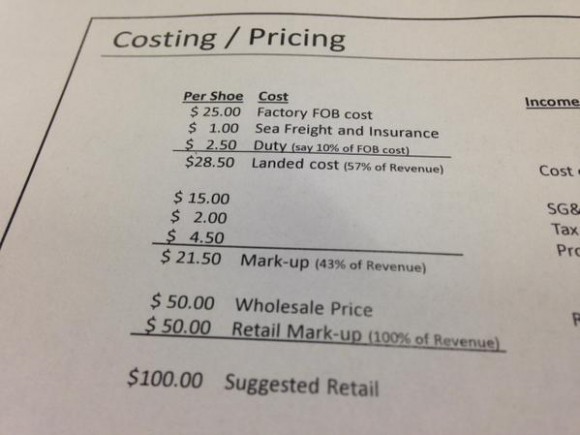
The actual cost breakdown totals $28.50. This means Nike makes a profit of $21.50 on a $100 sneaker. Subsequently, after taxes and administrative expenses (including research and development), true profit is approximately $4.50.
These profit and cost numbers can fluctuate depending on a number of factors. These factors include new supply chain advancements, regulations in industrial countries like China, deals with factories, international tariffs, and the costs of freight/transportation/shipping.
Keep in mind this breakdown isn’t accurate for all shoes. High priced sneakers like the Nike Foamposite or Nike Adapt BB will have different cost structures. But with that caveat listed, this breakdown is very good data to reference any time someone tells you that “Nike makes shoes for -insert ridiculously low number- dollars.“
If you have any details that should be added to the cost breakdown or would like to share information from your time working in the athletic shoe industry, please reach out via Twitter, Instagram, or email.
If this is your first time visiting us, WearTesters is primarily a shoe review website.
We publish comprehensive and unbiased footwear, apparel, and sporting goods reviews. Our veteran team of WearTesters uses a detailed review and testing process designed to provide recommendations and insights to help readers determine the best shoes and apparel for them. Our primary goal is to help our readers save time and money while finding the best possible products.

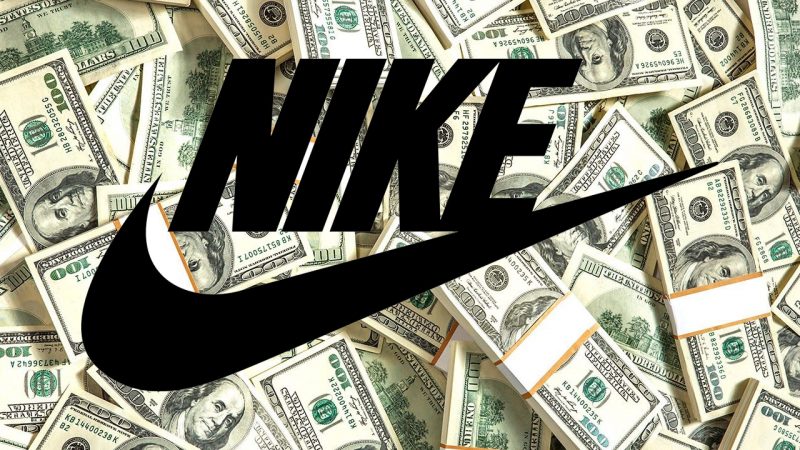

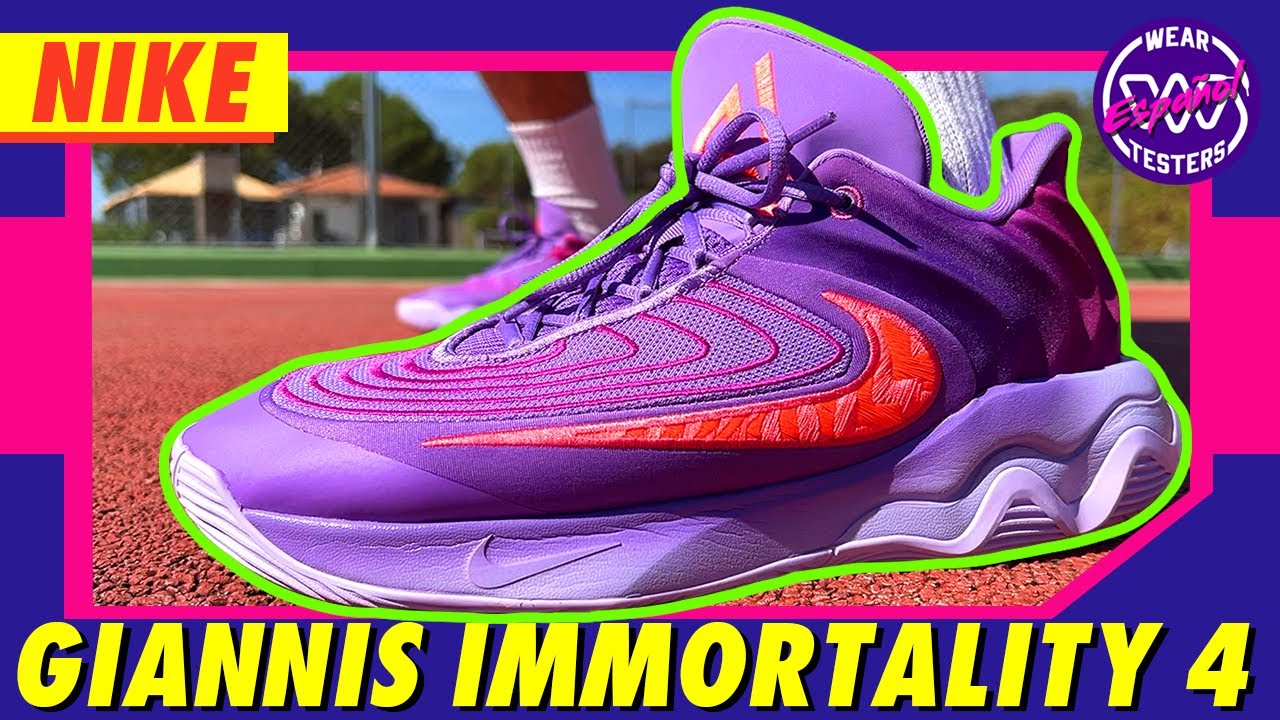
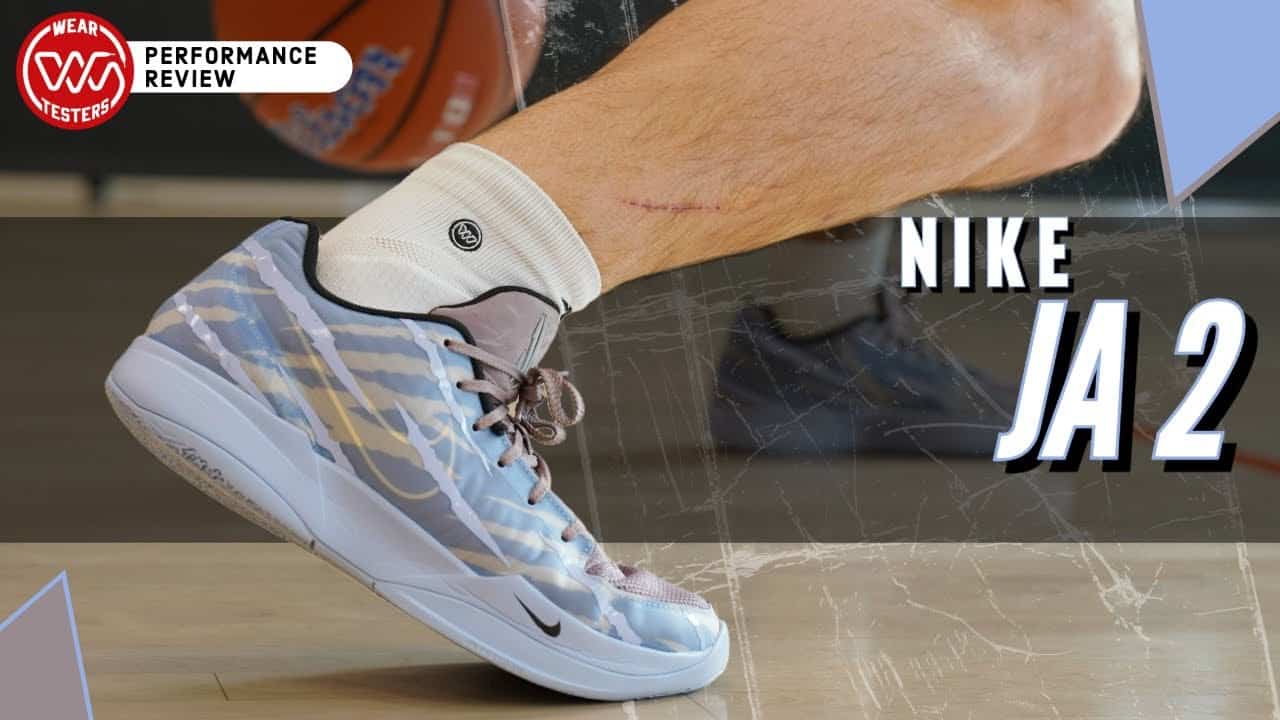
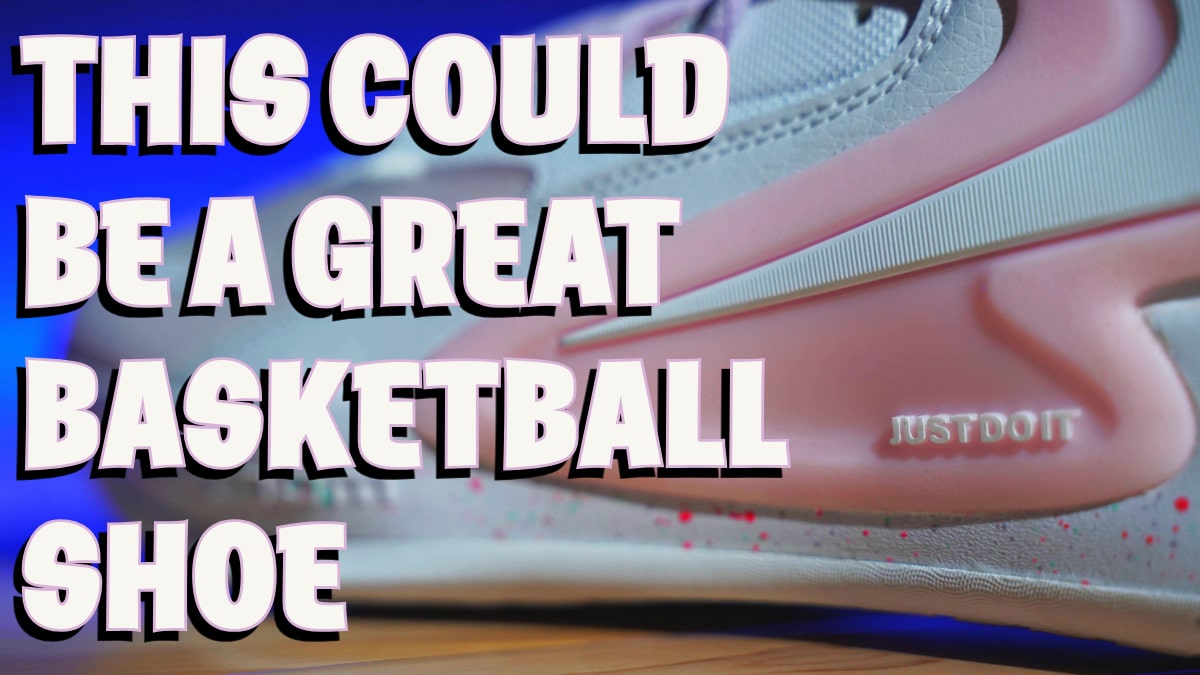
What about buying directly from Nike? I mean, obviously if they priced the shoes lower than the retailers, the retailers would never sell anything, and people buy them for the retail prices, so they just get a larger cut when they sell directly? Like say from Nike.com?
there are costs to that and of course, to actually selling retail for your own brand etc. of course they still profit more when you buy from nike. but not all nike’s are owned by nike as well. they are like mcdonalds franchises. nike stadium is owned by another entity, nike park as well. they are actually direct competitors. they consider other nike stores competitors. so you could consider that owner of that nike retail store would have the would be 50 of the other retailers.
And no retailer would buy from Nike because they would be undercutting the retailers profit. The very entity that makes Nike billions. No company near Nike size would ever do that.
http://www.bidnessetc.com/26422-nikes-dtc-business-drives-up-margins/
Higher margins for Nike:
Nike’s gross margin has been recording a continuous improvement owing to the company’s focus on direct-to-consumer (DTC) sales. DTC business includes sales made through Nike-owned retail stores and Internet websites. This channel allows Nike to bypass wholesalers and sell its products directly to end users at a higher margin.
Nike has a large DTC compared to it’s competitors but the majority of sales are to retailers (especially the Foot Locker companies.)
Only 5.3 billion out of 26.1 billion dollars were DTC:
http://news.nike.com/news/nike-inc-reports-fiscal-2014-fourth-quarter-and-full-year-results-fiscal-2014-fourth-quarter-and-full-year-results
No, there are laws in the USA and normal civilized nations. That a MFG can not sell a product less than their distributors. They also can not under quote their top line retail marketers. It’s a conflict of their contractual agreements with them. If they did, NIKE would have to pay them quite a big fine for it. But some Retailers or online marketers mark the prices up higher because they don’t have bulk discounts and they are ordering from the distributor at a higher rate. The more you buy, the cheaper they are.
What’s your point? To the average consumer—-What do they care from whom the actual PROFIT OR MARKUP comes from. All this is saying is, blame the retailers for bilking kids and adults (unfortunately) out of their money. Actually, it’s really supply and demand. They would charge $100,000 for a shoe if there was demand for it. Don’t buy it and retails will mark shoes down. I’m sure Nike is also fudging those numbers slightly and they are still making billions. That small sliver share is billions a year in profit and it’s ALL going to NIKE. All other mark ups are not profit only and split amongst thousands upon thousands of reatailers. Misleading and still tremendous profiteering. Sneakers are not needed for survival. Too bad.
The article was meant to inform, not to assign “blame” on who is getting ripped off. Many times I’ve heard people say “you know it costs __ to make that Nike shoe” so this is all good information for such conversations.
they are articles not to blame but to inform. not all blogs articles/news articles nitpick. it’s business and if you want to run one yourself you could learn from it. its really great actually just actually know about them because we can learn from it and apply it with our own ventures. 2x markups are common with retail. we have to understand having a business also means exploiting some factors to create markups and profit. profit is not bad. profit is the main point of business. unless you are running an non profit organization. still non profit organizations still have an agenda right. to serve whatever a goal they have. i’m not saying you dont have a point. with what you say after you said what’s your point to the article. you actually have but a lot of people also don’t share the same idea so we cant just say dont buy and they will hit markdowns. if we do that, we wont have anything to buy. and i know sneakers are not needed for survival, but they are needed for something which is why they have a market and they have this business. its not like they said you really need this. which is why it is really up to the consumer if they want it or not. and more often than not, they would like to have them. nike is not a charity or mainly a research company to fulfill our sports glory. i come from a research and financial background. i would say if i would be able to create a company i would base it from this model.
This is true, for example, maybe the KD 7 costs 5 dollars to make, but they need to cover other things like marketing, usa
and like the usage of electricity of the factory, shipping.
Exactly, you have to account for everything involved in making a sneaker.
Very informative info.
Great article but most Nike shoes are over $100.
Actually quite common, its always the middle man who drives up the prices because all he can do is ask extra money. Nike can find ways to cut on their costs to produce, but a retailer who sells the shoes can only hope Nike will ask less. Then again retailers are simply doubling the price so they seem to make major profits. It’d be interesting to see what the costs are for the retailer and how much profit they actually make.
How much do they make when I get them at Ross for $35.00
this is a very poor example bc their cost on shoes that cost $200+ is even less. the materials are much cheaper
Back in 1998 I had the opportunity to read a insurance claim on behalf of a major sport shoe manufacturer that lost a shipment off the coast of Africa. That insurance claim specifically listed the cost of bringing (manufacturing cost) a pair of shoes to market was $0.75! That was per pair! I’m sure they’ll not paying their Chinese workers any more now. And the same cheap materials are still being used. All this is propaganda to help justify them charging these foolish people for a little bit of cloth and rubber; and calling them shoes.
I agree. these cost numbers are inflated. if their true profit margin was only 4.5% ($4.50) then they wouldnt be in business. Capitalism is a system where you get a fraction of what you’re worth for making someone else rich selling something you made but can’t afford yourself.
bottom line, consumers are dumb.
This is 100% a lie. It costs Nike less than $10 per their Large model sport shoes (NBA etc). It’s still less than $10 per shoe for most of those Prada types of shoes that are literally made for NOTHING more than looking good and serve no function other than social class presentation. That $3 range is for off market nike shoes that you can find in walmart or cheap stores.
IN NO factory, is nike ever making shoes that cost them $25 a pair. Now we can go into a lot of details with shipping and freight cost, but when they load up (cough) 50 palets of shoes per container (cough), that’s more like $.50 per pair, because it only costs $3,000 to ship an average container, as long as it’s under 50,000lbs. (china-USA) im sure they have a discount for more shipments. So lets say they will have 120+ pairs per pallet(capable of 150+), ~50 pallets per container. Duty fees? Uh, the tax rates are related to the WHOLESALE factory cost, sooo. NIKE never reported any of their shoes costing $25 at factory, thus their tax ratios do not show a high duty rate.. How do I know– because I looked, requested the info when I bought stock and wanted to be sure they were giving right figures to their investors. EG me. But I no longer invest in the chinese scam that is Nike..
So, all-in-all, the final rate to get the shows to the store per logistics and ACTUAL real numbers is more like $18 per pair. That’s materials, mass fabrication, logistics to shipping center, ship over seas, logistics to warehouse and distributors/retailer – To the shelf. $18 PER PAIR. not $50. If you claim it’s $50, then you have not run any business, let alone done any real research on logistics and how NIKE operates. Because they literally pay their workers about $0.30 per shoe. ($0.60 per pair made. JS.
The information in the article is sourced from a reporter that covers Nike for the Portland Business Journal named Matthew Kish.
I’m not gonna argue price. What I’m going to argue is the failed QC by Nike , letting pass when these shoes get sold. I’m also going to target the less quality lrather material used in production of the shoes vs in the early 2000s and the 90s vs today . I am also going to argue to quality coming from a designer shoe and those designers failed QC and people finding large amount of glue rubbed on leather and or rising out of the sole into the leather….let’s use the example of the reimagined 3s and the Jordan 12 A Ma Maniere and or talk about color bleeding onto the white leather or lack multiple shoe laces for the price point. And cheaper cardboard etc.
I don’t care what Nike retail or retailer sell the shoe for. I care about all the other issues mentioned above.
Nike also need to stop reseller price gouging. I paid 390.00 for Jordan 3 wizards from a reseller and the shoe doesn’t release until April 21st. And that because Nike won’t stop bots or stop price gouging by 3rd party representation by stadium goods,goat,stock x let alone place like ebay that are not regulated and make people pay higher cost. Because of bot buying.
But first thing first. Fix all the crap mentioned above first and work your way down Nike.
Whatever you wanna say to make yourself fell better. But the $3 is a lot closer than what you came up with. Otherwise you couldn’t go to Walmart and buy a pair of sneakers for $20.
I can tell you this article is absolute BS. The numbers are wrong and whoever wrote this has absolutely no clue. First there is a 50% margin on apparel only. If you saw the whole price of sneakers vs retail the margin is closer to 40-45%. Example if a sneaker costs $100 retail the wholesale price for the retailer would be $58+ shipping. This leaves the retailer with a profit of $40 if the sneaker is sold at full retail. The majority of sneaker nike makes you order will not sell for full retail.
How do you write an entire article and bullshit the entire thing. Where did that price breakdown come from? Literally all made up.
The second paragraph states the information in the article is sourced from a reporter that covers Nike for the Portland Business Journal named Matthew Kish. As for the accuracy, the article was written in 2014. Numbers have no doubt changed over the past nine years.